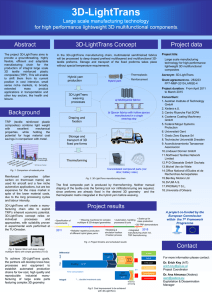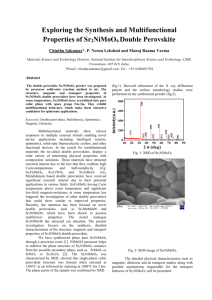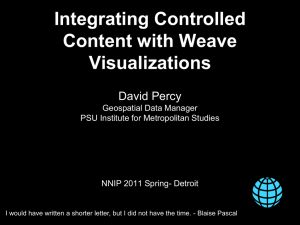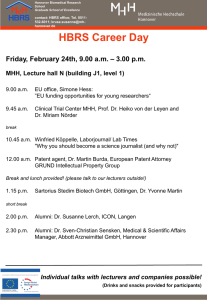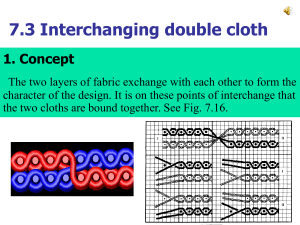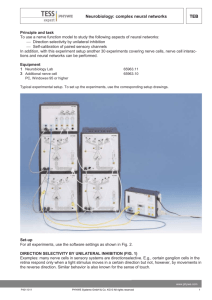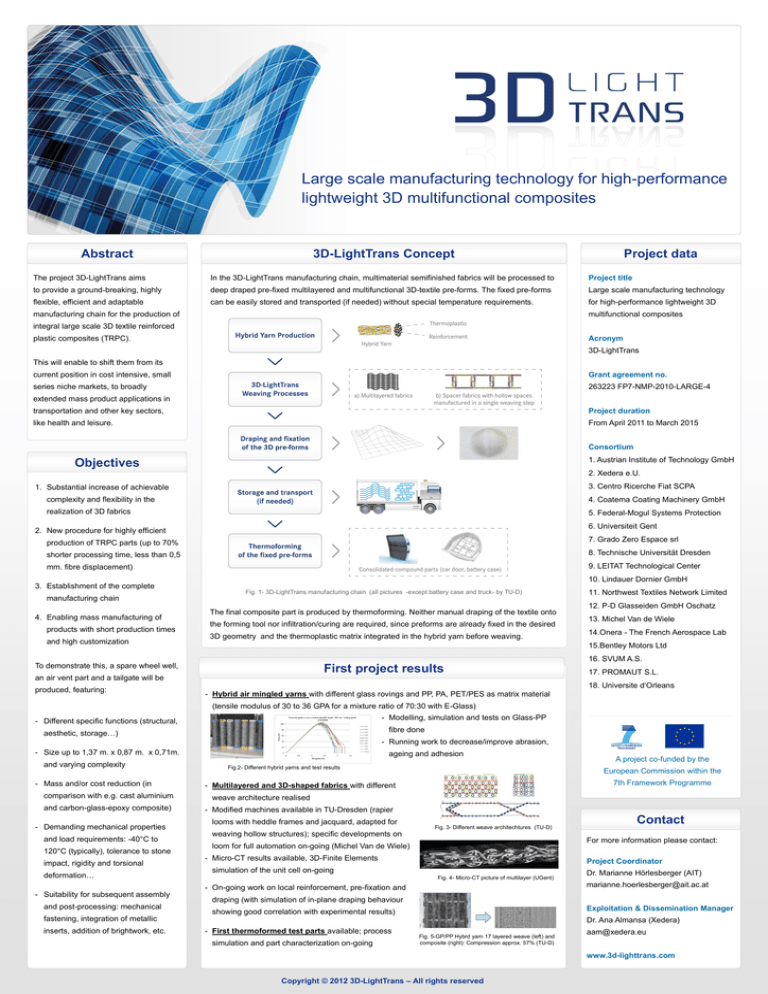
Large scale manufacturing technology for high-performance
lightweight 3D multifunctional composites
Abstract
3D-LightTrans Concept
Project data
The project 3D-LightTrans aims
In the 3D-LightTrans manufacturing chain, multimaterial semifinished fabrics will be processed to
Project title
to provide a ground-breaking, highly
deep draped pre-fixed multilayered and multifunctional 3D-textile pre-forms. The fixed pre-forms
Large scale manufacturing technology
flexible, efficient and adaptable
can be easily stored and transported (if needed) without special temperature requirements.
for high-performance lightweight 3D
manufacturing chain for the production of
multifunctional composites
integral large scale 3D textile reinforced
plastic composites (TRPC).
Acronym
3D-LightTrans
This will enable to shift them from its
current position in cost intensive, small
Grant agreement no.
series niche markets, to broadly
263223 FP7-NMP-2010-LARGE-4
extended mass product applications in
transportation and other key sectors,
Project duration
like health and leisure.
From April 2011 to March 2015
Consortium
1. Austrian Institute of Technology GmbH
Objectives
2. Xedera e.U.
3. Centro Ricerche Fiat SCPA
1. Substantial increase of achievable
complexity and flexibility in the
4. Coatema Coating Machinery GmbH
realization of 3D fabrics
5. Federal-Mogul Systems Protection
6. Universiteit Gent
2. New procedure for highly efficient
production of TRPC parts (up to 70%
7. Grado Zero Espace srl
shorter processing time, less than 0,5
8. Technische Universität Dresden
mm. fibre displacement)
9. LEITAT Technological Center
10. Lindauer Dornier GmbH
3. Establishment of the complete
Fig. 1- 3D-LightTrans manufacturing chain (all pictures -except battery case and truck- by TU-D)
manufacturing chain
4. Enabling mass manufacturing of
products with short production times
and high customization
The final composite part is produced by thermoforming. Neither manual draping of the textile onto
the forming tool nor infiltration/curing are required, since preforms are already fixed in the desired
3D geometry and the thermoplastic matrix integrated in the hybrid yarn before weaving.
11. Northwest Textiles Network Limited
12. P-D Glasseiden GmbH Oschatz
13. Michel Van de Wiele
14.Onera - The French Aerospace Lab
15.Bentley Motors Ltd
16. SVUM A.S.
To demonstrate this, a spare wheel well,
First project results
an air vent part and a tailgate will be
produced, featuring:
17. PROMAUT S.L.
18. Universite d‘Orleans
- Hybrid air mingled yarns with different glass rovings and PP, PA, PET/PES as matrix material
(tensile modulus of 30 to 36 GPA for a mixture ratio of 70:30 with E-Glass)
- Modelling, simulation and tests on Glass-PP
- Different specific functions (structural,
fibre done
aesthetic, storage…)
- Running work to decrease/improve abrasion,
- Size up to 1,37 m. x 0,87 m. x 0,71m.
and varying complexity
- Mass and/or cost reduction (in
comparison with e.g. cast aluminium
and carbon-glass-epoxy composite)
- Demanding mechanical properties
and load requirements: -40°C to
120°C (typically), tolerance to stone
impact, rigidity and torsional
deformation…
ageing and adhesion
Fig.2- Different hybrid yarns and test results
European Commission within the
7th Framework Programme
- Multilayered and 3D-shaped fabrics with different
weave architecture realised
- Modified machines available in TU-Dresden (rapier
looms with heddle frames and jacquard, adapted for
Fig. 3- Different weave architechtures (TU-D)
weaving hollow structures); specific developments on
and post-processing: mechanical
loom for full automation on-going (Michel Van de Wiele)
- Micro-CT results available, 3D-Finite Elements
Project Coordinator
simulation of the unit cell on-going
Fig. 4- Micro-CT picture of multilayer (UGent)
Dr. Marianne Hörlesberger (AIT)
marianne.hoerlesberger@ait.ac.at
draping (with simulation of in-plane draping behaviour
Exploitation & Dissemination Manager
showing good correlation with experimental results)
fastening, integration of metallic
inserts, addition of brightwork, etc.
Contact
For more information please contact:
- On-going work on local reinforcement, pre-fixation and
- Suitability for subsequent assembly
A project co-funded by the
Dr. Ana Almansa (Xedera)
- First thermoformed test parts available; process
simulation and part characterization on-going
Fig. 5-GP/PP Hybrd yarn 17 layered weave (left) and
composite (right): Compression approx. 57% (TU-D)
aam@xedera.eu
www.3d-lighttrans.com
Copyright © 2012 3D-LightTrans – All rights reserved

